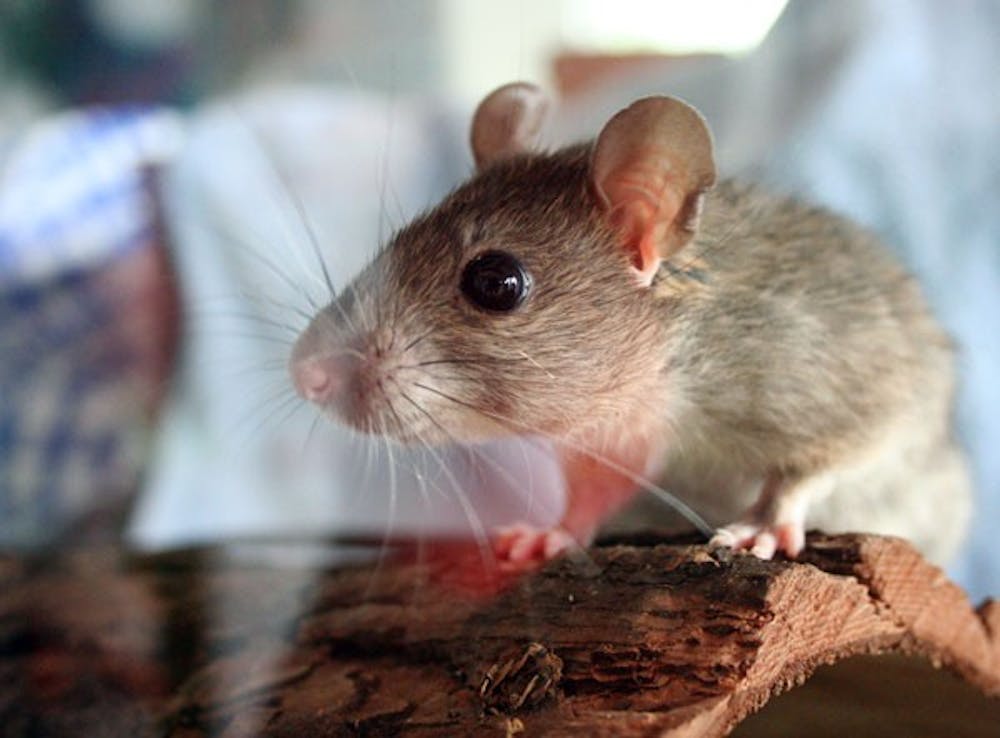With winter coming to an end and citrus tree yields on the rise, Tempe residents may find an unwanted houseguest living upstairs.
The roof rat, a dark brown rodent first discovered in east Phoenix in 2002, is known for its elevated traveling techniques — crawling on power lines, rock fences, tree branches and other high places.
Since 2004, the roof rat has been sighted in cities all over the Valley, including Tempe.
Hollowed-out citrus fruit in Phoenix’s Arcadia neighborhood led to the discovery of the first Valley roof rat nearly nine years ago.
“The No. 1 indicator was the orange,” said Barry Paceley, an Arcadia resident and self-described roof rat expert.
Devoured oranges and pomegranates were seen hanging from tree branches, Paceley said.
Tempe resident Ben Peterson, the owner of three orange trees and three grapefruit trees, said roof rats are a problem on his property.
Peterson said he attaches Tomcat Blocks, a poisonous rodent food, to the trees to kill off the rats.
“I just tell my wife, ‘I’m going to feed the pets today,’” he said.
Government officials and local residents have been trying to eradicate the roof rat problem since 2002.
According to the Maricopa County Web site, the best way to battle the roof rat is through neighborhood cooperation.
“You’ve got to work with your neighbors,” Paceley said.
He and his wife Joan are directors of the Arcadia Citrus Program, which takes donated citrus fruit and gives it to food banks, senior centers, Arizona Indian tribes and Maricopa County jails in an effort to remove the roof rat food source.
Almost 2 million pounds of citrus fruit has been donated to the program since 2002, according to its Web site.
The roof rat first came to the Valley sometime in the late ’90s, Paceley said, because the way that people moved to the Valley changed.
New residents started moving their supplies in crates, which the roof rats would hide inside, Paceley said.
The roof rats were contained in the Arcadia area for a while, he said, but because of their love for chewing wires, the rats began crawling into automobiles and soon became mobile.
“They are great hitchhikers,” he said.
There are three effective techniques residents can use to rid property of roof rats — snap traps, electrocution and poison, he said.
For the snap trap, Paceley recommended residents use peanut butter and pecans as bait.
“You may need to secure [the trap] … because they will drag it off,” Paceley said, adding that placing the trap in a shoebox with a cut-out hole should do the trick.
The Rat Zapper 2000, a device that kills rats with an electric current, can also exterminate rats in homes, Paceley said.
“When roof rats first popped up [in Arcadia], this product was not even in the state,” he said.
Using cat food as bait, the rat zapper can be placed in the attic, he said. A blinking light on the device indicates a rat has been killed.
“Three or four rats are going to be able to see Jesus in this little thing,” he said.
Paceley said the most effective device for eliminating roof rats is the Personal Use Bait Station, or PUBS.
“We like to call these ‘roof rat restaurants,’” he said.
PUBS are white cylindrical devices that can be set in trees. A poisoned food source is set inside the device and any rat can freely go in and out of the station.
Tempe’s solid waste ordinance prohibits dead animals from being placed in garbage containers and requires residents to call the public works department to remove the animal remains.
Shauna Warner, Tempe’s neighborhood services director, said there have been some talks about rewriting the ordinance, and that placing small rodents in Ziploc bags and tossing them in the trash is currently accepted despite the city’s code.
“Rats may not be of large enough size,” to pertain to the ordinance, she said.
For more information on eradication methods and the Arcadia Citrus Program, visit www.roofrat.net.
Reach the reporter at kjdaly@asu.edu





